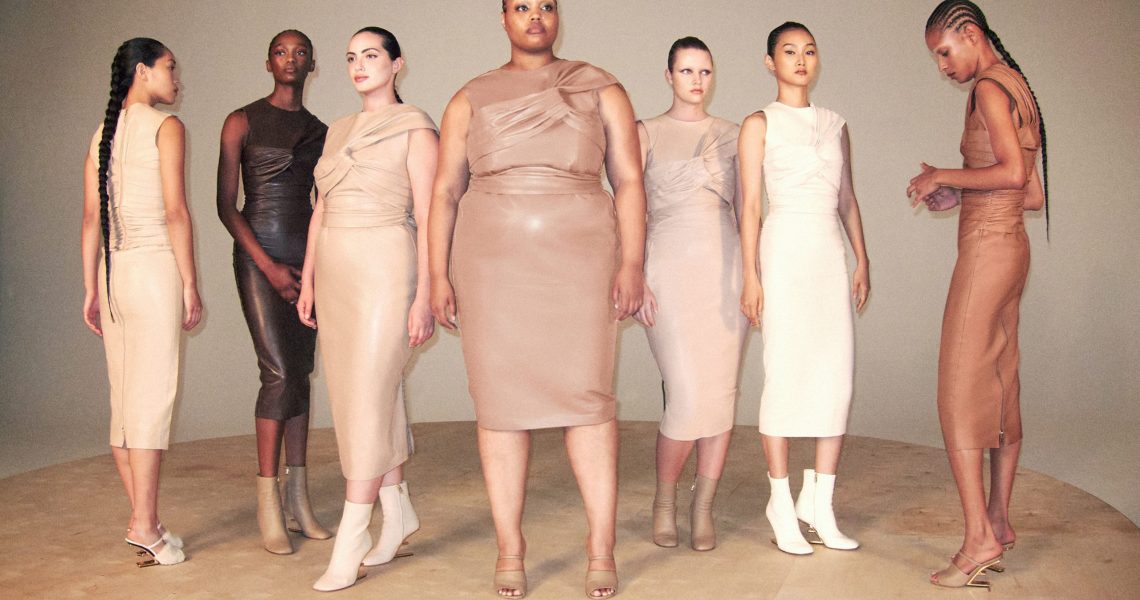Shapewear is having a moment. Considering Kim Kardashian’s Skims’ $3 billion valuation, the recent launch of Lizzo’s Yitty and all the other DTC shapewear brands popping up in the last year, it’s clear that the category is big business.
As the global shapewear market continues to grow — it’s expected to reach $3.3 billion by 2027 — there’s also been a shift in how brands are presenting themselves. Traditionally, shapewear has been about altering the body to appear thinner, smoother and sucked in. Spanx, for example, still offers a collection of “Skinny Britches.” But many of the new shapewear brands are associating themselves with the body-positive and size-inclusive movements. Inclusivity was a big selling point in the launch of Yitty, for example. The brand’s homepage bills Yitty as “shapewear reinvented” that’s “designed for every single body.”
Lizzo, after all, has spoken frequently about body positivity in the past, although she prefers the term “body neutrality.”
The inherent contradiction has been noted. In November, an article in online fashion magazine Stitch pointed out that, despite the body-accepting messaging in Skims marketing, billing itself as “the solution for every body” on its online store, the brand still sold products marketed as waist trainers and used language in its product descriptions around achieving an “ideal silhouette.”
Some modern shapewear designers don’t see a contradiction. The key point, according to Aalysha Athrea, founder of 3-year-old shapewear brand Kurvwear, is that shapewear works best when it’s helping customers get the appearance they want for themselves, not one that feels thrust upon them.
“As a society, we’re now celebrating the fact that beauty comes in different sizes, shapes and shades,” she said. “There is no ‘ideal’ shape anymore. It’s about individual choice and perception. People are empowered to choose their look based on their perception of beauty, rather than [being forced to] squeeze into the preset, compressive structure designed based on societal ideals.”
One way brands are reconciling shapewear with body positivity is through a de-emphasis on slimming.
“Shapewear is conventionally one piece of compressive fabric with the goal of making everyone as slim and thin as possible,” Athrea said. But with Kurvwear, she’s focused the products on enhancing curves, not reducing them. Kurvwear’s shorts, for example, are marketed as “a BBL without the price tag, risk or recovery,” referring to the popular Brazilian butt lift procedure.
Athrea said, due to the brand’s focus on dressing for one’s self versus according to a standard, Kurvwear has attracted a significant number of transgender customers and has a following among drag performers.
Another way shapewear brands are evolving the category is by encouraging customers to neither hide it nor be ashamed of wearing it. Shapellx, a shapewear brand founded in 2019, regularly posts outfit inspirations to its 167,000 Instagram followers showing ways to wear the pieces both under clothes and as visible parts of an outfit.
View this post on Instagram
The goal, according to Vita Tseng, Shapellx’s marketing manager, is to remove the stigma of wearing shapewear.
“There is no need to feel embarrassed about wearing shapewear,” Tseng said. “Everyone has the freedom and power to feel great about themselves. Shapewear is no longer a secret. It’s an ordinary piece like T-shirt that we wear every day.” The recent corset trend provides evidence of the new acceptance.




